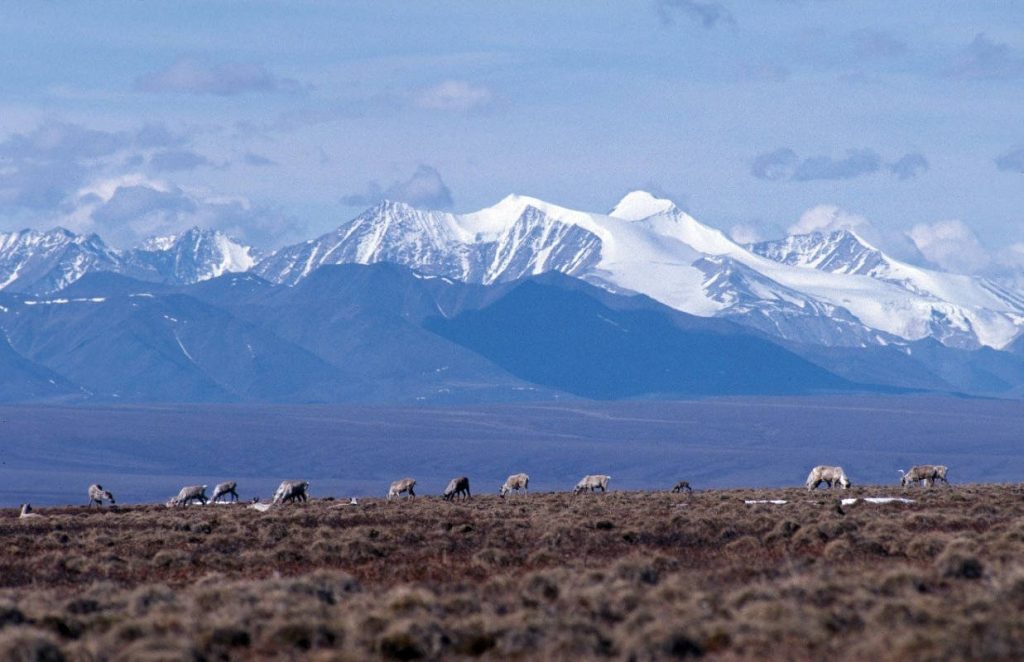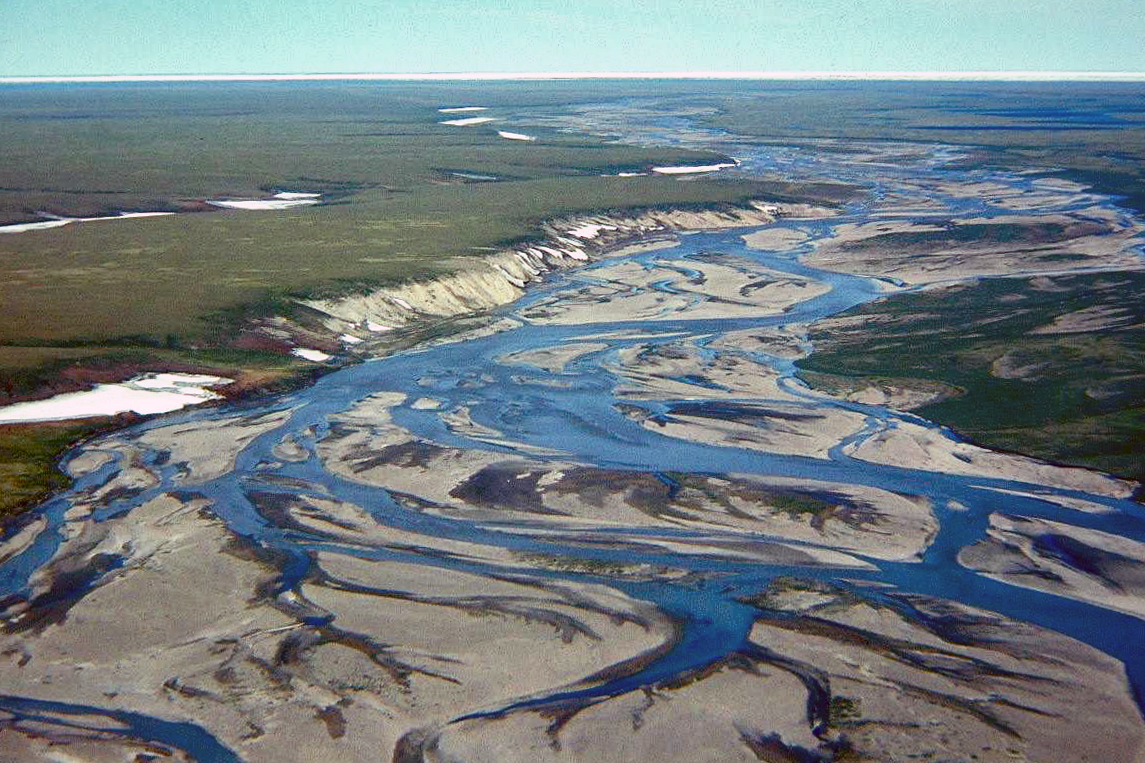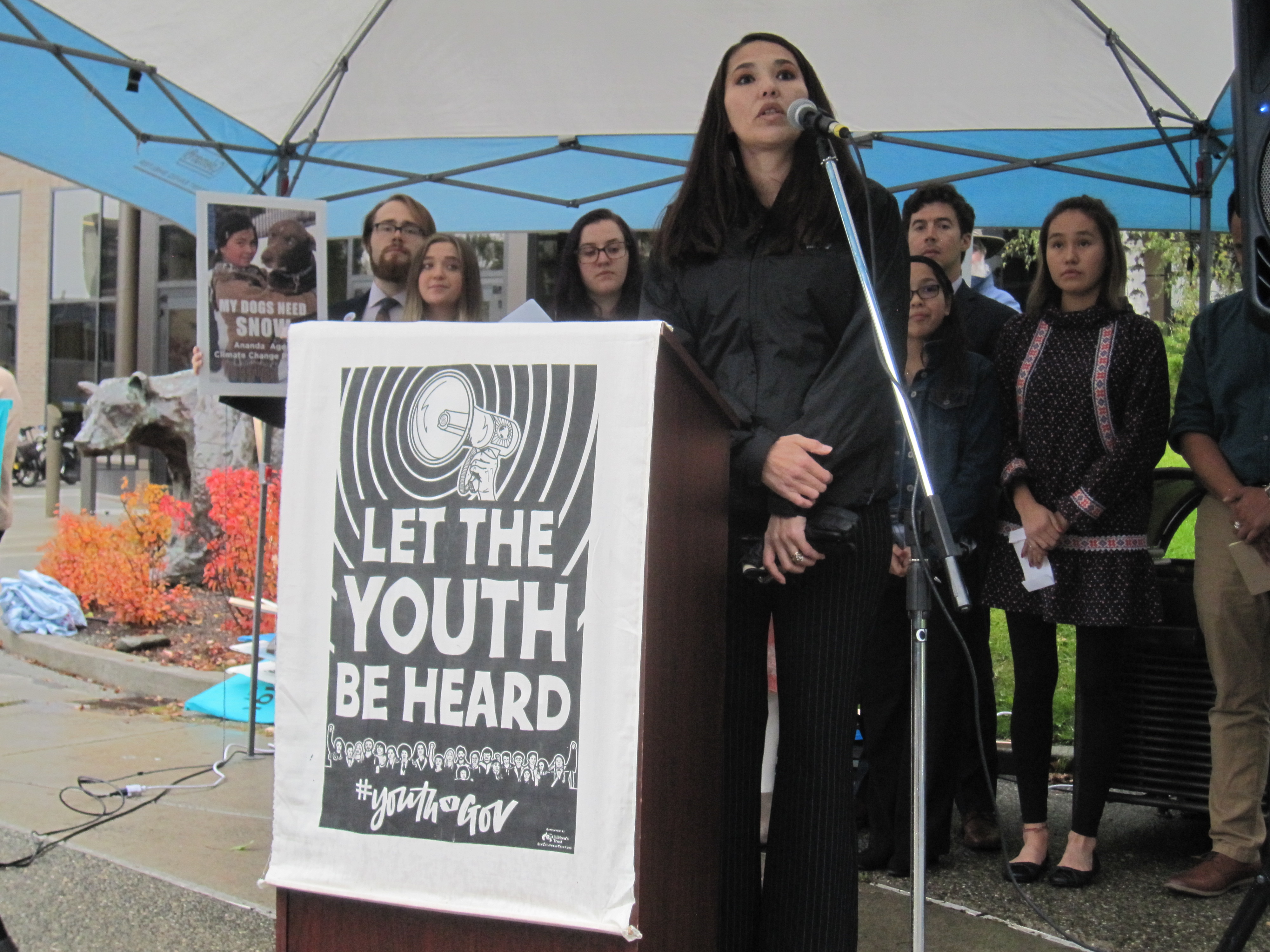With Arctic refuge drilling approved, focus shifts to legal battles and market forces
Oil exploration in Alaska's Arctic National Wildlife Refuge will now depend on the outcome of lawsuits — and whether any company is interested in drilling there.

With the Trump administration poised for an oil lease sale in the Arctic National Wildlife Refuge, drilling opponents and supporters are girding for a legal fight that might upend that plan. Meanwhile shifting market forces are causing uncertainty about how appealing those leases might be to oil companies.
The Department of the Interior on Monday issued its record of decision approving oil leasing in all of the refuge’s approximately 1.5 million-acre coastal plain. Even as they announced the decision, the Trump administration and Alaska political leaders defended its legality.
“Congress directed us to hold lease sales in the ANWR Coastal Plain, and we have taken a significant step in meeting our obligations by determining where and under what conditions the oil and gas development program will occur,” Interior Secretary David Bernhardt said in a department statement. “Our program meets the legal mandate that Coastal Plain leaseholders get the necessary rights-of-way, easements and land areas for production and support facilities they need to find and develop these important Arctic oil and gas resources.”
[Trump administration approves oil leasing in Alaska wildlife refuge]
“This is a capstone moment in our decades-long push to allow for the responsible development of a small part of Alaska’s 1002 Area. I appreciate the significant work of Secretary Bernhardt and his team to get us to this point. I’m confident the ROD has been developed carefully and comprehensively and look forward to the lease sales mandated by law,” Sen. Lisa Murkowski of Alaska said in the Interior statement.

Drilling opponents said they have abundant grounds for challenges to what they characterize as a rushed, flawed and inadequate environmental study.
“We absolutely are taking a very close look at the legality of what they’ve done today and we’re bringing all the legal tools to the tale to protect the refuge,” Brook Brisson, a senior staff attorney with the environmental law firm Trustees for Alaska, said Monday.
Potential grounds for legal challenges, Brisson said, include violations of the National Environmental Policy Act, the law that governs the environmental impact statement process; the Endangered Species Act and Marine Mammal Protection Act, both of which apply to polar bears, listed as a threatened species; and the Alaska National Interest Lands Conservation Act, which protects indigenous subsistence food-gathering rights in Alaska.
[Legislation seeks to protect polar bear denning habitat in Arctic refuge]
Other challenges may come from across the border. Canadian governments from the federal to tribal levels have long opposed oil development in the refuge coastal plain, an area used for calving by the huge Porcupine Caribou Herd that travels over the Alaska-Canada border.
The herd is the subject of a 1987 treaty that gives Canadian governments a say in how caribou are managed over the entire range.
The treaty is integral to the Arctic refuge, Bisson said. “One of the purposes of the refuge is to fulfill our international treaty obligations regarding wildlife,” she said.

One caribou-focused challenge is expected from the Gwich’in Steering Committee, which represents Gwich’in Athabascan tribal governments on both sides of the border.
“This administration has done nothing but disrespect the Indigenous peoples that have occupied these lands. Our ways of life, our food security, and our identity is not up for negotiation. The fight is not over,” Gwich’in Steering Committee Executive Director Bernadette Demientieff said in a statement. “We have attorneys on this case and the courts will get to hear about the corrupt and illegal ways the Trump administration has used to open the Sacred Place Where Life Begins for drilling.”
In addition to concerns about the Porcupine Caribou Herd, critics raise many other objections to oil development in the refuge.
They cite potential impacts to polar bears, which are increasingly using the coastal plain for denning and other activities as Arctic sea ice diminishes. They cite impacts to other wildlife, including birds that migrate to the refuge from distant areas. They cite impacts to subsistence harvests by Inupiat residents of Kaktovik, the one village the borders the coastal plain — though a significant percentage of Kaktovik residents support oil development there.
There are also concerns about development impacts in an area already hit by rapid Arctic climate change.
Industry uncertainty
Another unknown is whether the current economic climate gives the oil industry has much motivation to drill in the refuge.
The Center for American Progress, a nonprofit public policy institute, has drawn up a list of companies that it considers potential bidders, should a lease sale occur.
The most likely, according to the list, is the Inupiat-owned Arctic Slope Regional Corp., long a strong proponent of refuge drilling. ASRC is deeply involved in the oil industry, at stages ranging from exploration and oil extraction to petroleum refining. ASRC holds the mineral rights to land on the North Slope, including some already in production in the Colville River area and about 90,000 acres of Native-owned land within the Arctic refuge boundaries.

In a statement that hinted at future drilling plans, ASRC’s chief executive officer hailed the leasing decision.
“This is certainly an encouraging development when it comes to the economic future of the communities across Alaska’s North Slope, the state of Alaska as well as the rest of the nation,” Rex Rock, ASRC’s president and CEO, said in the statement. “This area was set aside by Congress some 40 years ago because of its potential for holding significant reserves of oil and gas, and I look forward to the Coastal Plain living up to its promise of becoming an economic driver, both inside as well as outside of our region. I would also like to thank our Congressional Delegation as well as this Administration for their tireless efforts in getting to this point.”
The Center for American Progress list is dominated by smaller independents, including Hilcorp, the privately held company that just acquired all of BP Plc.’s North Slope assets and took over as operator of the Prudhoe Bay oil field.
The list includes the three legacy producers on the North Slope – BP, ConocoPhillips and Exxon Mobil – but there are some reasons that those companies might skip any ANWR lease sale.
[Suddenly, new investment in Arctic Alaska oil looks very unlikely]
BP has departed Alaska almost entirely. It completed its sale of North Slope assets to Hilcorp on July 1; pending is the conclusion of its sale of pipeline holdings, including its nearly half-ownership of the Trans Alaska Pipeline System.
ConocoPhillips is busy on the opposite side of the North Slope and has been the most active explorer in the National Petroleum Reserve in Alaska, or NPR-A. ConocoPhillips launched the first commercial oil production in the NPR-A, and it has been pursuing an ambitious exploration and development program there. The company is seeking to develop a huge NPR-A project, Willow, that last week won a formal endorsement in a final environmental impact statement released by the Bureau of Land Management Willow, if developed, could produce up to 590 million barrels of oil, according to the BLM; development would cost $4 billion to $6 billion, according to past presentations by ConocoPhillips.
Experts have said the oil industry slump may depress industry interest in the refuge’s coastal plain or any other frontier area.
The head of the Alaska Oil and Gas Association referenced those economic conditions in her statement about Monday’s decision.
“While the industry has been hard hit by the recent pandemic and low prices, it is critical that the government continue to meet its leasing obligations—such as the statutory mandate to carry out lease sales for ANWR—in order to support America’s oil and gas industry in meeting ongoing domestic and global demand,” Kara Moriarty, AOGA president and CEO, said in the statement. “Development in a small fraction of ANWR has long been supported by Alaskans; especially by those who live in the region. Alaska’s oil and gas industry has a long history of safe and environmentally responsible development in the Arctic, and it will continue to deploy new technology and techniques to safely and responsibly develop any leased areas in ANWR.”
Moriarty also mentioned an oil-tax initiative that will be considered by Alaska voters in November as a more pressing issue for the industry. If passed, Ballot Measure 1 would establish a base tax rate of 10 percent for production from large North Slope oil fields, with rates increasing as oil prices rise, and it would eliminate a system of production tax credits.
“The biggest risk to producing in future areas in Alaska, regardless of this lease sale, is a ballot measure that would significantly raise taxes on production, including from future production in ANWR,” she said in the statement.
Brisson said other factors could dampen interest in leasing.
The environmental analysis performed by the Trump administration is “legally flawed” and dubious, she said: “Any company that looks at the process – and really looks at it – I think will think at least more than twice.”
Companies would also “risk their reputations” if they go into an area like the Arctic refuge coastal plain, she said.
Major banks and financial institutions, including Goldman Sachs, JPMorgan Chase, Citigroup and Wells Fargo, have declared that they will not finance any development in the refuge or, in some cases, any new oil development in the Arctic.
Scheduling a lease sale on the coastal plain will require a few more steps beyond the record of decision, according to the Center for American Progress. There must be a call for nominations, a process that solicits industry and public comment, followed by a notice of the lease sale. At least 30 days must elapse between the notice and the sale itself, according to the center.